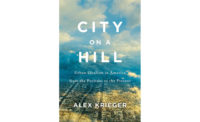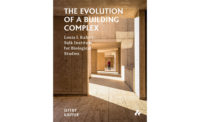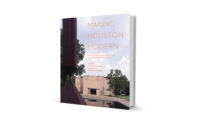Anthony Alofsin’s new book on Wright’s tumultuous relationship to New York City is the third one centering on a connection that Wright himself might have thought unworthy. “A great monument to the power of money and greed” Wright called the city, but several Wright scholars have questioned his dismissals. Herbert Muschamp’s Man About Town: Frank Lloyd Wright in New York City (1983) treated Wright’s energetic antipathy toward Gotham from 1926 to 1933 as an inspirational force shaping Wright’s theories of urban planning. Jane King Hession and Debra Pickrel’s Frank Lloyd Wright in New York: The Plaza Years, 1954–1959 (2007) offered a detailed chronicle of Wright’s life in New York and his one-week-a-month residence at the posh Plaza Hotel during the Guggenheim Museum’s construction. Alofsin’s book differs from these earlier studies by asserting that Wright’s time in New York between 1925 and 1933 was “the turning point of his career and established the persona that the world would come to know.” This is quite a claim about a city for which the architect had expressed lifelong contempt. That assertion also lessens attention to other cities where Wright found inspiration: Chicago, Berlin, Tokyo, and Los Angeles. So how does Alofsin develop his case?
Since the Guggenheim was Wright’s only fully realized Manhattan project, Alofsin considers two unbuilt Wright projects for the city as having paramount career-defining importance. These were commissioned by Reverend William Norman Guthrie of St. Mark’s Church in-the-Bowery: one, named for the church, evolved into an 18-story glass skyscraper in 1929 with a pinwheel plan (RECORD, January 1930). The other was a modern cathedral that drew Wright into designing a colossal steel house of worship reflecting the common ideals of world religions (1926). Both grandiose schemes spawned key architectural forms, Alofsin argues, which Wright integrated decades later into the Price Tower in Bartlesville, Oklahoma (1956), and Beth Shalom synagogue in Elkins Park, Pennsylvania (1959). To deepen an appreciation of Wright’s indebtedness to New York’s notable personalities, the author offers a touching portrait of the iconoclastic Guthrie, who showed Wright “that the city was a place for dreams and ambition, a platform and battleground for artistic vision.”
If the theme of New York as the penultimate dream incubator for Wright seems engaging, you may find Alofsin’s book revelatory. If you view Wright’s architectural designs as a consequence of his interplaying myriad imagined and actual urban and rural environments, then Alofsin’s perspective may seem stultifyingly narrow. No actual city anywhere thrilled Wright as deeply as his own utopian “Broadacre City.” New York particularly triggered Wright’s wrath since its high-density skyscraper profile was so contrary to Broadacre’s uncrowded pastoral skyline.
That Wright enjoyed conversing with city power brokers like agency macher Robert Moses, gloried in meeting entertainment stars (and possible clients) Arthur Miller and Marilyn Monroe, appreciated contact with longtime artistic colleague Isamu Noguchi, and luxuriated in swank amenities the city offered like the 21 Club seems uncontestable. But to transform Wright’s appreciation for the city’s material, social, and cultural riches into a tale of the city’s “making” of his true character and mission neglects Wright’s unwavering visionary dedication to a city yet to be forged.






